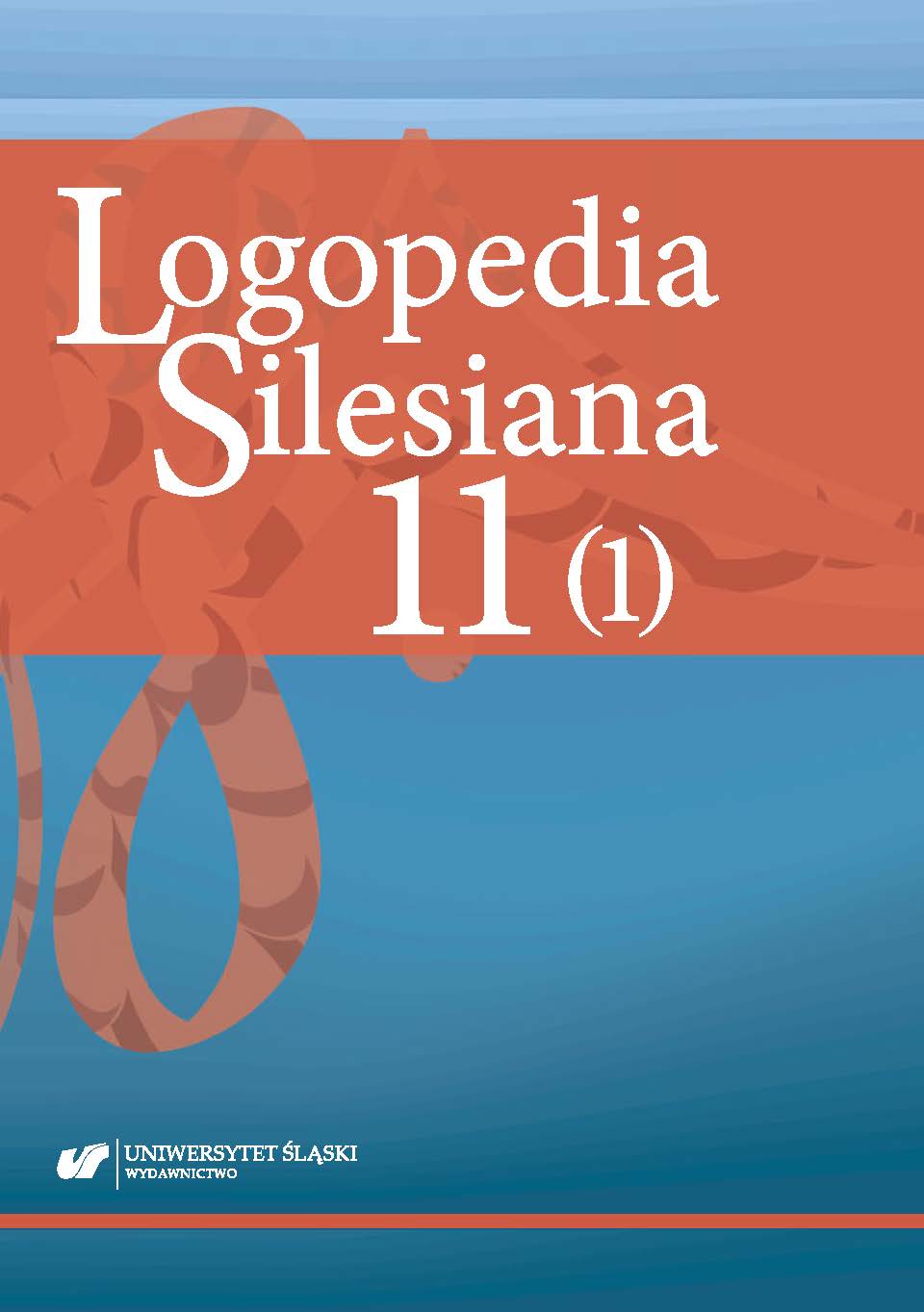Boksa, E. (2016). Dysfagia z perspektywy zaburzeń komunikacji językowej u dzieci i młodzieży z niepełnosprawnościami sprzężonymi. Kraków: Libron.
Google Scholar
Bryzik, B., & Gajos, S. (2014). Uczę się świata na nowo. Zeszyt ćwiczeń dla dorosłych afatyków. Vol. 2. Kraków: Wydawnictwo Edukacyjne.
Google Scholar
Darley, F.L., Aronson, A.E., & Brown, J.R. (1975). Motor speech disorders. Philadelphia: W.B. Saunders.
Google Scholar
Gatkowska, I. (2012). Diagnoza dyzartrii u dorosłych w neurologii klinicznej. Kraków: Wydawnictwo Uniwersytetu Jagiellońskiego.
Google Scholar
Grabias, S. (2001). Perspektywy opisu zaburzeń mowy. In: S. Grabias (ed.), Zaburzenia mowy (pp. 11–43). Lublin: Wydawnictwo Uniwersytetu Marii Curie-Skłodowskiej.
Google Scholar
Jastrzębowska, G. (1998). Podstawy teorii i diagnozy logopedycznej. Opole: Wydawnictwo Uniwersytetu Opolskiego.
Google Scholar
Jauer-Niworowska, O., & Kwasiborska, J. (2009). Dyzartria. Wskazówki do diagnozy różnicowej poszczególnych typów dyzartrii. Gliwice: Komlogo.
Google Scholar
Kozubski, W., & Liberski, P.P. (eds.). (2006). Neurologia. Podręcznik dla studentów medycyny. Warszawa: Wydawnictwo Lekarskie PZWL.
Google Scholar
Kubiszewska, J., & Kwieciński, H. (2010). Stwardnienie zanikowe boczne. Postępy Nauk Medycznych, 6, 440–448.
Google Scholar
Michalik, M. (2004). O językoznawczą metodę w badaniach nad dyzartrią (na przykładzie pacjentów z mózgowym porażeniem dziecięcym). Annales Academiae Paedagogicae Cracoviensis. Studia Linguistica II, 19, 297–306.
Google Scholar
Mirecka, U. (2015). Postępowanie logopedyczne w przypadku dyzartrii. In: S. Grabias, J. Panasiuk, T. Woźniak (eds.), Logopedia. Standardy postępowania logopedycznego (pp. 839–863). Lublin: Wydawnictwo Uniwersytetu Marii Curie-Skłodowskiej.
Google Scholar
Panasiuk, J. (2012). Diagnoza logopedyczna w przebiegu chorób neurologicznych u osób dorosłych. In: E. Czaplewska & S. Milewski (eds.), Diagnoza logopedyczna. Podręcznik akademicki (pp. 263–324). Sopot: Gdańskie Wydawnictwo Psychologiczne.
Google Scholar
Przeździęk, M. (2011). Usprawnianie mowy w SM. Zestaw ćwiczeń logopedycznych dla osób chorych na stwardnienie rozsiane. Warszawa: Wydawnictwo Polskiego Towarzystwa Stwardnienia Rozsianego.
Google Scholar
Sovák, M. (1978). Logopedie. Praha: SPN.
Google Scholar
Surowaniec, J. (1993). Podręczny słownik logopedyczny. Kraków: Wydawnictwo Naukowe Wyższej Szkoły Pedagogicznej.
Google Scholar
Tarkowski, Z. (2003). Diagnoza i terapia osób dorosłych z dysartrią. In: H. Łangowska-Reiner, J. Hajduk-Nijakowska (eds.), Logopedia. Pytania i odpowiedzi. Podręcznik akademicki (vol. 2, pp. 784–786). Opole: Wydawnictwo Uniwersytetu Opolskiego.
Google Scholar
Tarkowski, Z. (ed.). (1999). Dyzartria. Lublin: Fundacja ORATOR.
Google Scholar
Wald, I. (1993). Genetyka chorób mięśni. In: I. Hausmanowa-Petrusewicz (ed.), Choroby mięśni (pp. 163–188). Warszawa: Wydawnictwo Naukowe PWN.
Google Scholar
Worms, P.M. (2001). The epidemiology of motor neuron diseases: A review of recent studies. Journal of the Neurological Sciences, 191, 3–9.
Google Scholar
Wójtowiczowa, J. (1993). Logopedyczny zbiór wyrazów. Warszawa: Wydawnictwa Szkolne i Pedagogiczne.
Google Scholar


 https://doi.org/10.31261/LOGOPEDIASILESIANA.2022.11.01.03
https://doi.org/10.31261/LOGOPEDIASILESIANA.2022.11.01.03

 10.31261/LOGOPEDIASILESIANA
10.31261/LOGOPEDIASILESIANA